Steak Cooking Levels- How To Cook The Perfect Steak
This recipe may contain Amazon or other affiliate links. As an Amazon Associate I earn from qualifying purchases.
There are 5 typical steak cooking levels for beef from rare to well done. This guide will show you how to get to the perfect steak doneness to cook your meat like a chef.
What Are The Steak Cooking Levels?
Steak is one of the favorite meat to eat for dinner. In fact, the average American eats 79 pounds of beef per year.
Cooking steak right is the hallmark of a great cook and the pride of a barbeque master. But “right” doesn’t mean the same for everyone.
There are 5 typical steak cooking levels that people might request (from least to most cooked):
- Rare: the meat is bright red inside, full of juices, and the outside is lightly browned.
- Medium Rare: the steak is a paler red, and the outside is slightly darker.
- Medium: there’s only a thin layer of light-red meat inside, the rest is pink/brown and the outside brown.
- Medium Well: the meat is much drier, you can barely see any pink.
- Well Done: the whole meat is
Each steak doneness level requires the inside of the meat to get to a specific internal temperature.
Grilling Times And Temperature
The critical factor that determines how well a steak is cooked is its internal temperature.
No matter the thickness of your cut, if the meat reaches a certain temperature, it will get a specific color and doneness.
Reaching that desired temperature depends on the thickness of your cut and the heat at which you cook it.
Follow the guide below to cook a typical steak of thickness between 1 inch (2.5cm) and 2 inches (5cm).
As a rule of thumb, it takes about 9 minutes to cook a 1-inch rare steak – 4.5 minutes on each side.
Any quarter of an inch of thickness takes an additional minute while going to another level takes another minute.
For example, cooking a medium-well 1.5-inch thick cut would take 9 minutes + 2 minutes (for the thickness) + 3 minutes (for the level) = 14 minutes or 7 minutes per side.
A typical mistake is to start cooking all pieces of meat at the same time and taking them out when they reach their cooking level.
This often results in the less-cooked pieces of meat seating on a plate while other pieces keep cooking.
The best approach is to start from the more cooked pieces and add the faster-cooking ones as you go.
| Cooking Level | Temp (°F) | Temp (°C) | 1″ | 1.25″ | 1.5″ | 1.75″ | 2″ |
|---|---|---|---|---|---|---|---|
| Rare | 120-130°F | 48-55°C | 9 min | 10 min | 11 min | 12 min | 13 min |
| Medium Rare | 131-139°F | 55-60°C | 10 min | 11 min | 12 min | 13 min | 14 min |
| Medium | 140-149°F | 60-65°C | 11 min | 12 min | 13 min | 14 min | 15 min |
| Medium Well | 150-158°F | 65-69°C | 12 min | 13 min | 14 min | 15 min | 16 min |
| Well Done | 158-212°F | 70-100°C | 13 min | 14 min | 15 min | 16 min | 17 min |
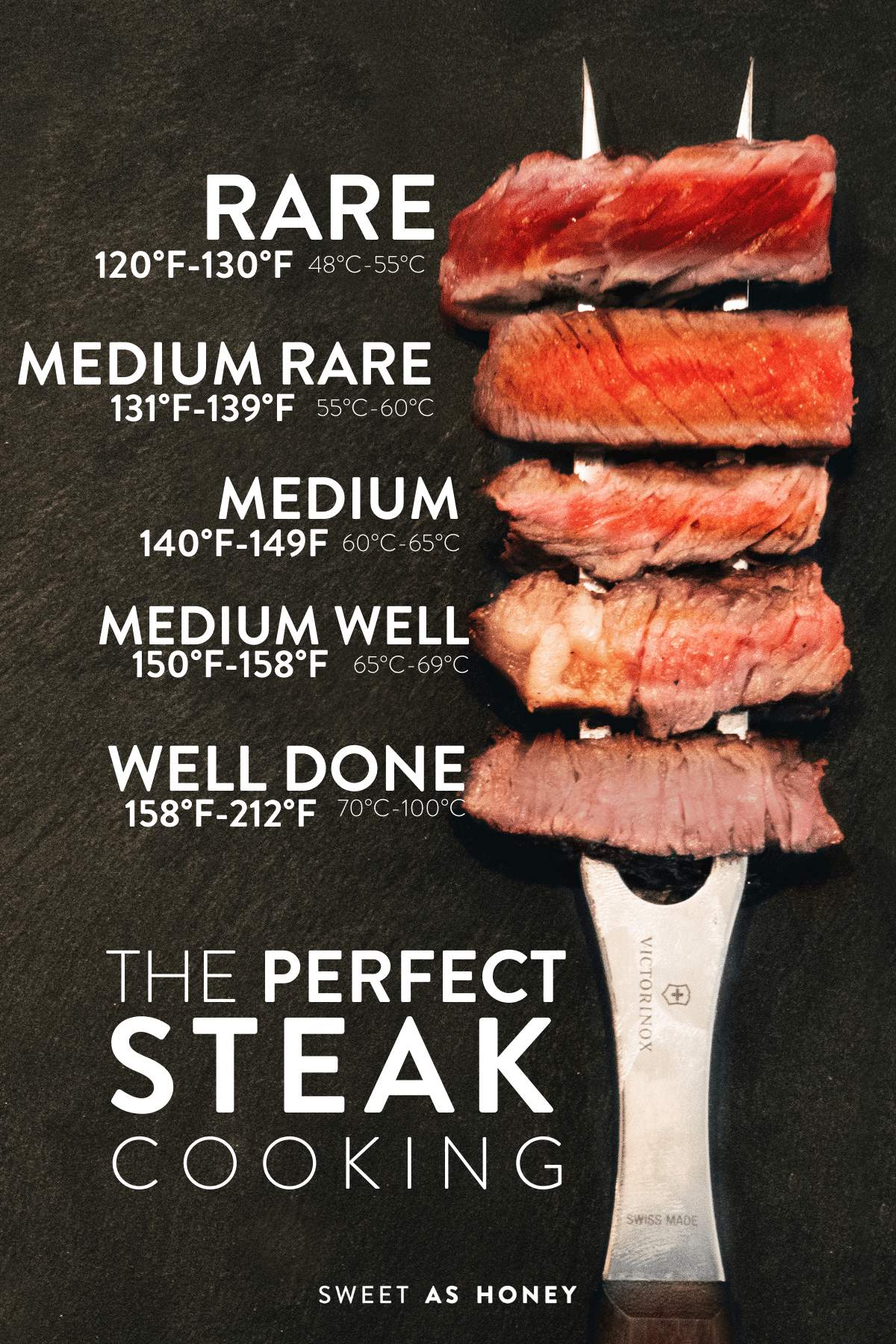
Using A Meat Thermometer
An alternative to using a guide is to use a meat thermometer.
To find the temperature of your steak, you have to insert the pointy metal tip of your thermometer right in the middle of the meat.
Don’t insert it too dip as you might reach the frying pan or barbecue and get an incorrect reading.
Leave the thermometer for 10 to 15 seconds to get an accurate reading.
Picking the right thermometer is essential as a badly calibrated one can lead to under or overcooking your steak!
How To Grill A Steak
Grilling or cooking steak is almost considered art, as they are many factors to consider.
First, it’s important to cook steak on high heat to reach high temperatures. Slow cooking tends to degrade muscle fibers instead of just contracting them.
When you sear meat, it creates a gradient of temperature that progresses inwards while moisture comes out.
Read my tips below to find the steak cooking level that matches your preferences.
Rare
Cooking a rare steak is somewhat challenging as the meat goes from red to pink very rapidly.
Also, keep in mind that thick cuts tend to keep cooking for a few more minutes after being taken off the grill. The residual heat in the outer layer keeps radiating inwards.
So if you are checking the cooking by cutting the steak and checking it visually, you’d have to take it off the grill before it reaches the desired color.
To cook a perfect rare steak takes between 9 minutes (4 minutes 30 seconds on each side) for a 1-inch-thick cut and 13 minutes (6 minutes 30 seconds on each side) for a 2-inch thick steak.
The internal temperature you’re looking for if you are using a thermometer is 120 to 130°F (48-55°C).
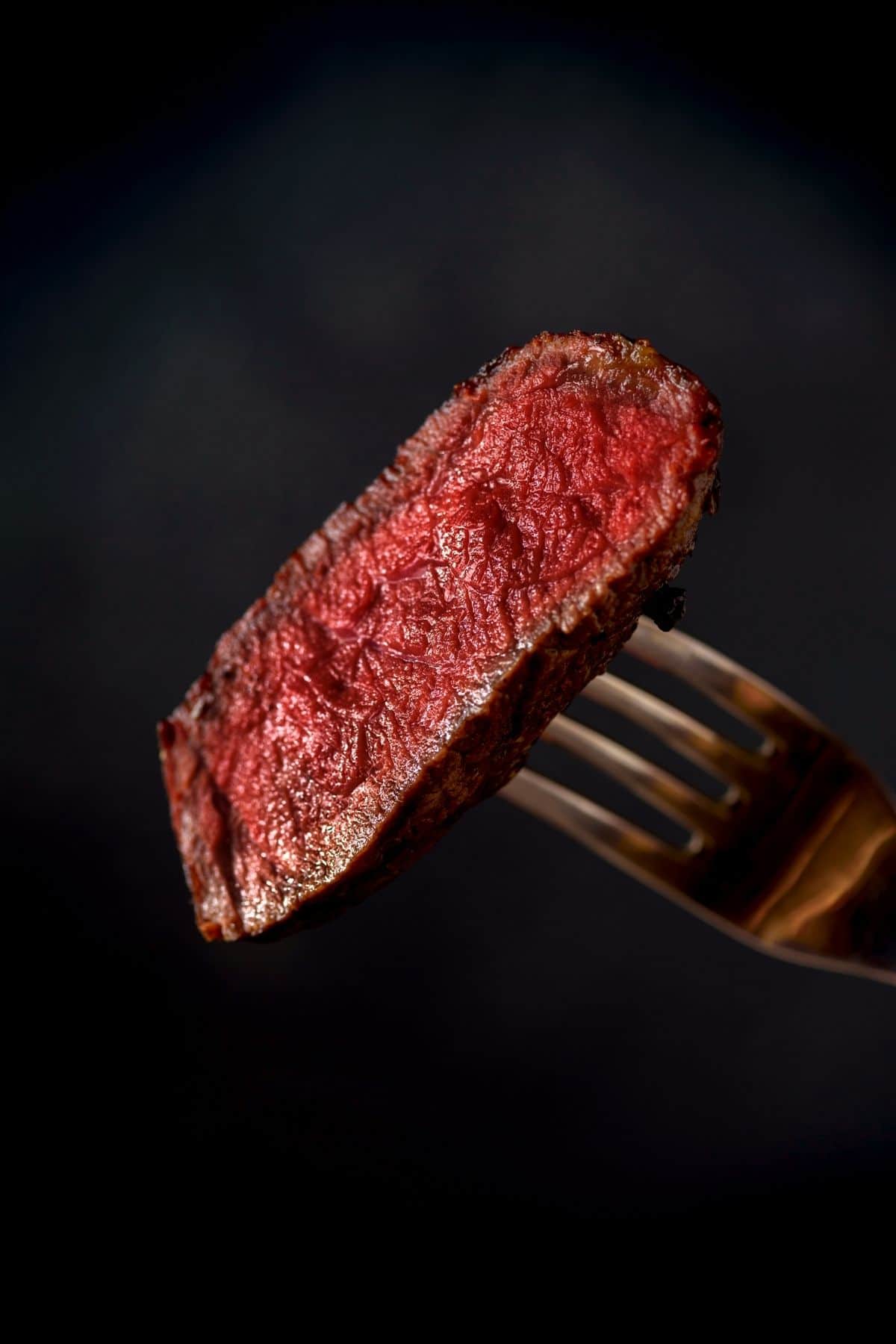
Medium-Rare
Grilling a medium-rare steak is probably the most common request from guests the meat is still juicy and the center pink but the sides are darker.
It takes about an additional minute compared to a rare steak to cook (30 more seconds per side).
So for a 1-inch medium-rare steak, you need 10 minutes of grilling (5 on each side) and up to 14 minutes (7 on each side) for a 2-inch cut.
The temperature you’re aiming for is 131 to 139°F (55-60°C).
Medium
A medium steak keeps most of the tenderness while bringing a slightly stronger meat taste and somewhat crispy sides.
It takes another minute compared to a medium-rare steak, so you need 11 minutes for a 1-inch cut and all the way to 15 minutes for a 1-inch thick steak.
The temperature of cooking must be between 140 and 149°F ( 60-65°C) for the meat to reach the right color and flavor.
Medium-Well
Medium well steaks have a much meatier taste, crispy sides, and less moisture.
You need at least 12 minutes of cook time (for a 1-inch steak) and up to 16 minutes for a 2-inch steak to grill to medium-well.
The temperature to target is 150 to 158°F (65-69°C).
Well Done
Well done steaks tend to have the strongest meat taste and smell. They are much chewier and have almost no juiciness.
The outsides of a well-done steak are slightly caramelized and the textures of the inside and outside are quite similar.
You need 13 minutes to cook a well-done 1-inch steak and up to 17 minutes for a 2-inch cut.
To reach that level of doneness, the meat needs to reach 158 to 212°F (70-100°C).
It’s easy to overcook a well-done steak as it doesn’t get much darker outside.
An overcooked steak will have a very rubbery texture that isn’t pleasant at all.
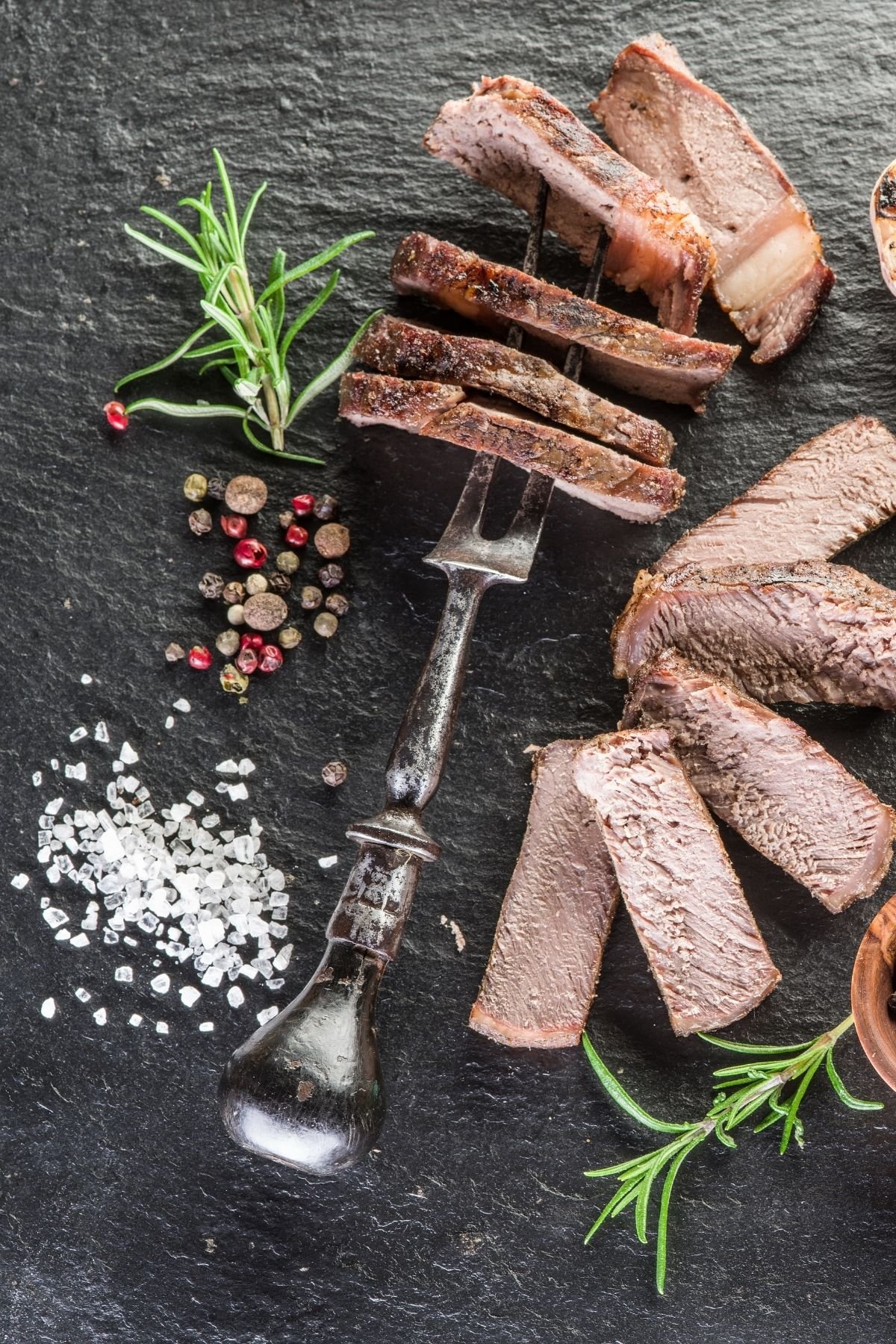
Storing Cooked Steaks
If you cook meat for a barbecue, you might have a number of cooked pieces of meat at various cooking levels.
To store them you have to wrap them tightly and put them in an airtight container. Wrapping both protect the meat from bacteria and keeps its moisture.
Steak can be stored for up to 3 days when packed properly.
To reheat pre-cooked steak, you will have to cook them again in a warm frying pan. This will make them gain at least 2 levels of doneness.
It’s essential that they reach at least 149°F to kill any bacteria that might have grown while in the fridge.
So if you had frozen a rare steak, you will be making a medium or medium-well steak.
I don’t recommend storing steak that was precooked to well done, unless you are planning on using it in a casserole or slow-cooking recipe.
The Best Pieces Of Meat For Grilling
Despite common beliefs, a steak is not a specific part of the animal or a specific muscle.
As a result of the many cuts of beef, steaks can have massively different tastes.
Here are the most common:
- Short Loin: where the T-Bone steak and porterhouse steak are taken. Some of the best cuts.
- Tenderloin: the most tender part of the animal and the best for a rare or medium-rare steak.
- Brisket: often used for barbecues because it’s cheaper and easier, but the meat is not as tender.
- Sirloin: a piece similar to short loin but with a stronger meat taste.
- Ribs: the best part of ribs are the prime rib and ribeye.
The Best Side Dishes For A Steak
A good steak is typically the main event of a dinner. It’s the piece de resistance that everyone is waiting for.
But meat is only ever as good as the side dish that you pair it with.
Here are my favorite ones for a grilled or barbecued steak.
Best Steak Sauces
If you need a sauce for your steak, try these!
Frequently Asked Questions
Yes, but there are a few precautions to take. Steak tartare is an example of raw ground beef that is seasoned with pepper and salt with a raw egg yolk on top.
You have to make sure the meat is extra fresh for to eat it raw.
A typical beef steak contains about 25 grams of protein per 100 grams. The rest is fat (19 grams) and mostly water.
Rare and medium-rare steaks have to be served immediately after cooking them. The center of the meat can lose its temperature very quickly.
Wagyu Beef is a Japanese breed of beef that is considered the best for meat consumption. There are legends that wagyu cows are raised with music and given beer to enhance their taste.
It’s not quite true. Some breeders of Kobe beef do raise their cows this way, but it’s not the case with the vast majority of Wagyu breeders.
Steak Tataki is a small-cut piece of beef seared at a very high temperature for a very short time. The result is very red meat (raw inside) while the sides are caramelized.
Yes, steaks can be marinated to bring new flavors to the meat. Don’t marinate for more than 24 hours though. For a delicious marinade, use my 3-Ingredient Steak Marinade recipe.
Posted In:
Disclaimer
The recipes, instructions, and articles on this website should not be taken or used as medical advice. You must consult with your doctor before starting on a keto or low-carb diet. The nutritional data provided on Sweetashoney is to be used as indicative only.
The nutrition data is calculated using WP Recipe Maker. Net Carbs is calculated by removing the fiber and some sweeteners from the total Carbohydrates. As an example, a recipe with 10 grams of Carbs per 100 grams that contains 3 grams of erythritol and 5 grams of fiber will have a net carbs content of 2 grams. Some sweeteners are excluded because they are not metabolized.
You should always calculate the nutritional data yourself instead of relying on Sweetashoney's data. Sweetashoney and its recipes and articles are not intended to cure, prevent, diagnose, or treat any disease. Sweetashoney cannot be liable for adverse reactions or any other outcome resulting from the use of recipes or advice found on the Website.

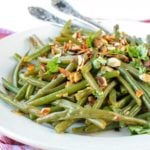











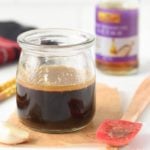

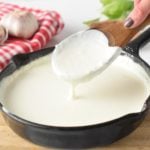
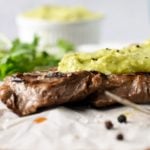

Share this post!
If you enjoyed this post, share it with your close ones!
Leave a comment
Wow!!! The ENTIRETY of the details in this recipe is like taking a college level cooking class. I LOVE IT I haven’t tried the steak Alfredo yet. It was my 18 yo grandson who requested it as a friend said he had it at Outback. I’m sure this will blow away anything Outback could offer.
So stay tuned